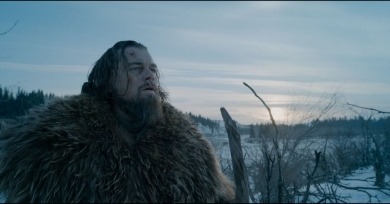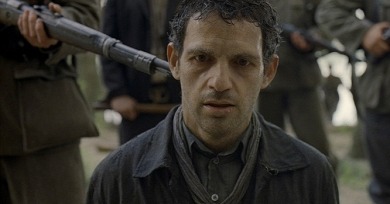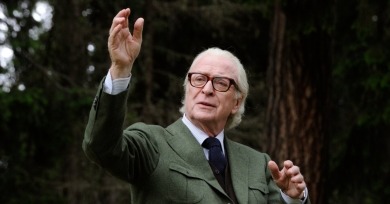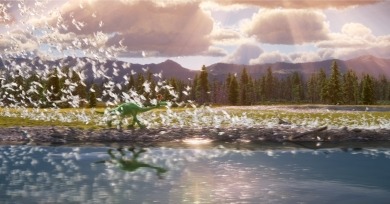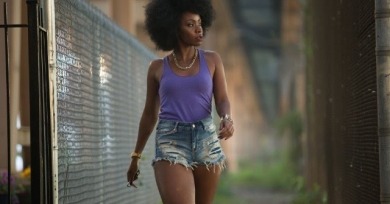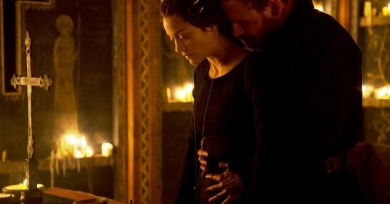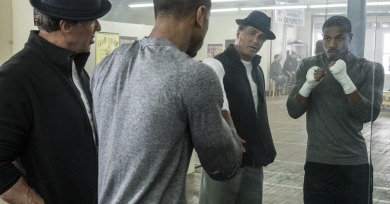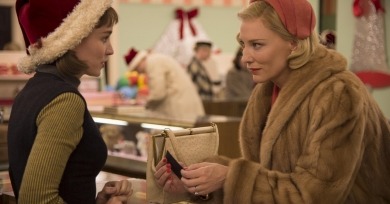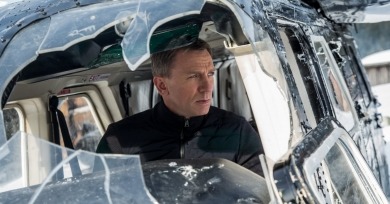Reviews
Emboldened by the critical and popular success of Birdman—that ostensibly invigorating, hugely irritating statement of artistic and aesthetic principles—the director has gone chasing after Herzog, Coppola, Friedkin, and all the other mad, corporate-backed visionaries who’ve dragged movie stars into the jungle, or in this case, the Rockies.
Son of Saul’s insistence on real-time tension means that it’s deliberately cut off from considerations of the bigger picture; what it theoretically gains in trade is a sense of authenticity, which becomes increasingly presumptuous in light of its heavy-handed storytelling and basic lack of dramatic believability.
Although Miguel Gomes has explored nested stories, and has layered and mythologized daily events in his other films, such as Tabu and Our Beloved Month of August, Arabian Nights is a far riskier endeavor than previous efforts.
After breezing along for more than half of its running time, the film takes a turn for the tone-deaf and wrong-footed, never worse than when expressing fraudulent concern for “common people.”
To call this misty, low-risk collection of calculated revelations a high-toned The Bucket List would be a disservice to Rob Reiner.
The Good Dinosaur, like so many animated films, concerns a journey of self-actualization, but it’s also a classic prairie western. The central dinosaur family are reptilian cousins to the homesteaders who might have settled in Oklahoma and lived in hardscrabble isolation in the mid-nineteenth century.
Chi-Raq is a testament to the power of words. And in a film that mostly shies away from depicting bloody violence onscreen, that’s quite a statement.
It isn’t the conceptual spin that ultimately undoes Kurzel’s Macbeth, but his ponderous approach, hefting each scene on top of the last as though moviemaking was an act of grunting, straining brute force, stacking up a big, bleak cairn.
In Creed, Stallone’s acting, which is tied to but also more complicated than the mere matter of his presence, is the crucial factor which allows the film to triumph within the strictures of the Rocky series, if not quite transcend them.
At least on paper, Anderson’s film, about the making of the album, qualifies as minor in nearly every way: its 54-minute length; its lack of a national theatrical release; its sudden announcement, relatively free from fanfare, less than a year after Anderson’s Inherent Vice. And yet Junun is in other ways a major event.
It’s a film that luxuriates in details, in textures, and specificity of places and costumes, and the particulars of Carol and Therese’s sexuality are absolutely crucial, yet also not the endpoint. What is it they say about finding the universal in the specific?
In most scenes, Mond is aiming for full-on subjectivity—with director of photography Mátyás Erdély’s camera clinging to James for dear life in close-up—so essential backstory details often slide in out of nowhere and take us by surprise.
Those of us already feeling nostalgic for print, and for whom deep investigative journalism seems like a dying art in an era when crossing t’s and dotting i’s seems to be of less and less priority, will come to Spotlight with a sympathetic eye.
In trying to further jostle the moral and emotional order of the Bond universe, director Sam Mendes and his collaborators paradoxically succeed only in stultifying it.
